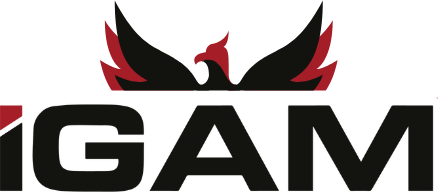iGAM Glossary
Understanding the nuts and bolts of your production line is the key to success in manufacturing. Find definitions to manufacturing, industrial, and automation terms below.
Ready to purchase? iGAM carries used industrial robots, access structures, manufacturing equipment, parts, and more. Plus, you’ll enjoy peace of mind with your purchase because iGAM items are backed by a 20-month warranty.
Have more questions or need help with automation? Chat with us, fill out the Contact Us Form, or call an iGAM Specialist at 855-678-iGAM (4426) and let us help!
iGAM Glossary of Industrial Automation Terms
- 3D Printer – a machine that produces physical models from designs manufactured out of raw materials
- 3P – stands for Production, Preparation, and Process; a form of lean manufacturing that focuses on eliminating waste through process and product
- 5S – stands for Sort, Set in Order, Shine, Standardize, and Sustain; a form of lean manufacturing that originated in Japan and centers efficiency around necessary versus unnecessary processes
- Arm – a mechanical device composed of links and joints that is programmable to complete a set of commands
- Axis – the availability of motion in robot joints in linear or rotary actions
- Base – the platform to which a robot arm is attached
- Cellular Manufacturing – a lean manufacturing approach that focuses on strategic arrangement of equipment and processes to reduce waste
- Circuit Breaker – a system used to protect electrical systems from damage caused by short circuits
- Contactor/Contact Block – an electrical system used to turn on and/or off an electrical circuit, typically connected to switches
- Controller System – a computer used to store data, program commands, and execute commands in a robotic system
- Cycle – one complete execution of a set of actions programmed in a robotic system
- Downtime – the period in which any machine is not in production due to malfunction or failure
- End of Arm Tooling (EOAT) – the equipment attached to the end of the robot arm that interacts with the handled materials
- Field Distributer – an interface between the operator and the equipment providing a streamline drive connection to a power supply
- Human Machine Interface (HMI) – an electronic dashboard connecting the user to a machine or device to view data and perform operations
- Inverter – an electronic device used to change circuitry from direct current (DC) to alternating current (AC)
- Kaizen – a form of lean manufacturing; Japanese business philosophy meaning “continuous improvement” or “change for the better,” focusing on holistically improving product quality, company culture, and production efficiency
- Kanban – a method of lean manufacturing to manage workflow processes in a visual manner
- Lean Manufacturing – a methodology that applies practices and principles to reduce waste, minimize downtime, increase cost savings, and produce sustainably
- Material Handling – the movement of materials by a robotic arm from one place to another
- Module – equipment that enables field devices to log, archive, and convert data
- Offline Programming – the ability of a robot or piece of equipment to operate separately from programming
- Payload – the capacity of weight that a machine can handle during an operation
- Positioner – a rotating platform used to provide access to materials
- Programmable Logic Controller (PLC) – an industrial computer used as an automation control system with storage for instructions, such as I/O control logic
- Quality Assurance (QA) – the methods and procedures used during testing to ensure a product delivers according to design specifications
- Repeatability – the ability of a robot to perform the same task precisely multiple times
- Robot – a machine programmable by a computer that can perform a variety of tasks
- Robot Programming Language – the channel of communication between human and robot using computer-based commands
- Rotary Joint – a piece of equipment used to connect two parts to allow rotating motion
- Servo Motor – an automatic controller device used to regulate the electric servomechanisms by monitoring the feedback signal
- Six Sigma – a lean manufacturing technique that focuses on reducing error in business
- Teach Pendant – a handheld programming box to remotely control a robot’s movements
- TPM – stands for Total Productive Maintenance; a form of lean manufacturing that strives for production perfection through machine maintenance
- Turntable Trunnion – a pivoting circular revolving table commonly used in work cells
- Uptime – the time in which a robot or other industrial equipment are in use and manufacturing on a production line
- Variable Frequency Drive (VFD) – a device used in a drive system to control voltage and match the motor’s actual load
- Welding – the process of combining metal pieces or parts at a joint or edge using heat
- Work Cell – a complete system composed of one or more robots and a controller; may also include other equipment depending on purpose and production method
Want to learn more about industrial manufacturing and automation? Become an iGAM Insider or visit the iGAM blog where we cover everything from industrial robots, parts, and manufacturing equipment to manufacturing trends, industry news, and company updates.
